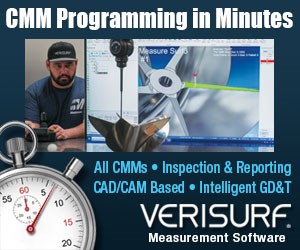FAQ: Business Development & Strategies
What are some ways for mold builders to implement Industry 4.0?
1. Know your problems, know your solution—This is perhaps the most important starting point for the process. Many times, the change management involved with the system can appear to be more daunting and serve as a distraction to the proposed end goal. The workforce must be aligned with the reason the company is trialing the system so that the team can overcome challenges and share a willingness to change to a new process.
2. Pick a supplier to join your “steering committee”—Establish a steering committee comprising different team members who represent the various departments throughout the business. From there, communicate with your supplier and request their involvement with the higher level decisions from the internal steering committee. This process will help your team feel a part of the decision-making and allow your supplier to forecast any changes or challenges on the horizon.
3. Maintain honesty and a positive attitude—This was our first rule at Intex. We did not set out to use this system to police the workforce. Our system (Smart Attend) excels at scheduled and live machine analytics, so that is where the team spends its energy. Our system reports on our timelines, machine status and many other parameters that we display across the shop floor as a tool to support one another to meet critical deadlines.
(Source: How a Mold Builder Can Implement Industry 4.0)
What are low-cost marketing strategies for mold builders to grow their businesses?
The best sales/marketing strategy boils down to advertising, which is all about taking a space for promotion because your customers will never know you if they cannot find you. The three major areas of space to invest resources are your website, social media and culture. Here are a few tips:
• If your website has only a homepage, lacks visual representation and is not mobile-responsive, it is time to update with short videos and images of your capabilities, processes and people. Infographics are also a good target for the eyes.
• Create a LinkedIn page, and venture into Instagram and Twitter. Create interest and direct people to your website. Ask your customers and key suppliers for success stories to share.
• Consider hiring a professional, look to your internal team for a motivated individual or approach a local high school or community college as a class project for IT web development and video/photography. These are all great ways to expose the next generation to manufacturing.
• Promote your culture by sharing stories of your team serving the community, working with mentors, interns or apprenticeships, supporting local groups, holding company social activities or participating in trade associations.
• When demonstrating capabilities, tailor your message to your customer base.
• Don’t forget the value of direct email messaging by you, hired talent, a contract representative or a lead generation firm.
(Source: How to Market on a Budget)
How can moldmakers determine better mold prices?
The first step in establishing the proper price for a mold is understanding your business by identifying all of the costs associated with operating the business. This includes costs associated with making the mold or molds that you are pricing and any additional costs associated with the project, such as shipping or sampling. A thorough comprehension of internal processes, capacity and the value statement that you offer are also essential.
Once you establish an accurate picture of the costs incurred and the value that you offer, it is then necessary to look outward. You should use benchmarking and competitive analysis to establish the value that other companies offer and the price that they are charging for that value. Awareness of the needs of your customers, the abilities of your vendors and the overall economic climate are important elements of which to be aware as well.
The most significant point to remember is that all of these things can change. If your current pricing model is from the 1980s, there is a good chance that it is irrelevant and potentially causing harm to your operation. Constant monitoring and re-evaluation are the only ways to ensure that the data that you are using to arrive at the price is accurate.
There are several ways to use this information to price a mold project. Regardless of which pricing approach you use, the proper price should cover the costs necessary to complete the project, reflect the value that you are offering to your customer and allow for a profit. Opportunity cost must also be a part of the equation. If you win the project that you are pricing, evaluate how that affects your shop’s capacity and its ability to win other projects or complete other molds.
(Source: Steps for Determining Better Mold Prices)
How can moldmakers better sell their moldmaking services to potential customers?
To sell a service, you have to make sales contacts. It could be at a trade show, a networking event, in someone’s office or on the phone, but you have to tell people what you do and start the conversation.
When your goal is to sell a service, you cannot only use blast emails, banner graphics, sponsorships, trade show booths, magazine ads or a website. To sell a service, you must also talk to live human beings. Why? Because of how people make decisions. Marketing efforts are absolutely necessary to make your business known and start the conversation, but you need more to close the deal. You need relationships.
Very simply, your prospects are just like you, and we all live in fear of bad decisions. That’s why any potential customers for your service want to speak with you. They could get all of the same information from your website, but some unspoken force inside them is driving them to read the room. They want to know if they can trust you. You are not selling the capabilities of your machinery. Selling a service means selling promises that you will come through for them.
(Source: How to Sell Your Service)











